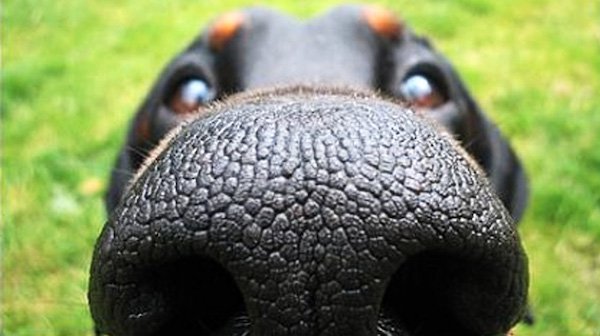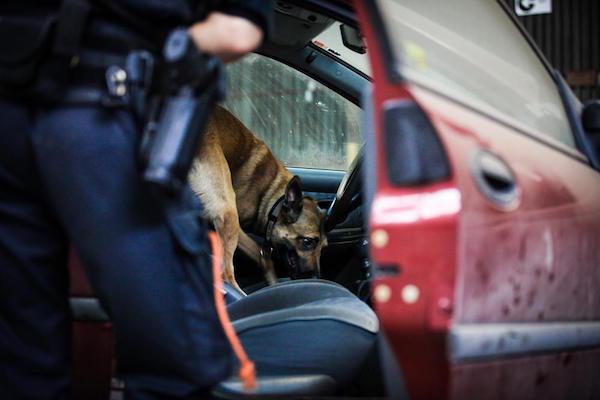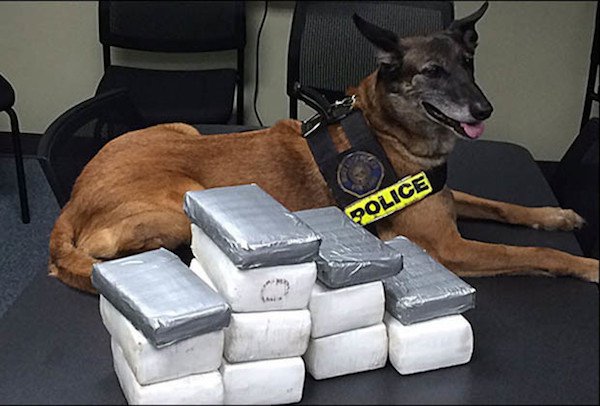There is something so undeniably cute about a dog in uniform. I’m serious. It could be a seriously intense dog, chasing after me because it thinks that I’ve got some weed hiding on my person, and instead of running, I think I’d just try to pet the guy. What can I say? I love dogs. Sure I’d end up in jail, but I’d be telling my cellmate about this awesome dog I met.

Honestly though, K9 dogs are a seriously talented, intensely trained corps of dedicated police officers. They keep drugs off the street, find criminals and even rescue trapped people. In fact, they’re a hell of a lot of things they’re good at and things I didn’t even know about K9 officers.
So here’s some facts about them, that are nothing to sniff at.

The Greeks, Persians, Babylonians, and Assyrians were the first cultures to use dogs for policing. They were used as either guard dogs or for search and rescue.

Police dogs were first used in 1907 in NYC. They were called Patrol Squad 1.

The first breed of police dogs ever used were German Shepherds. On top of being used by police forces, they were also adopted by the military and were used during WWI, WWII, The Korean War and The Vietnam War. Known for their size, superior intelligence and work ethic, they were well regarded.
The second most common breed was the Belgian Malinos; similar to the German Shepherd, but a little smaller and sleeker. Known for their endurance, speed, intelligence and high intensity, they’re a popular breed in Europe.
Other police dog breeds include Bloodhounds, Akitas and Belgian Sheephounds.

A K9’s career only lasts about 6-8 years. Usually after this amount of time, they’re taking off active duty and allowed to retire. There have been certain K9 officers that have actively fought crime for 10 years, but they’re rare.

Police dogs can differentiate between identical twins. While we might see the same person, because they look alike, to a police dog, they can use their noses to tell the difference, as well as body language and other subtle differences only apparent to them.

A K9 dog’s sense of smell is at least 10,000 times more acute than ours. They can smell things that we can only imagine, from great distances.
Yet they need to be right up close to another dog’s butthole to say hi. Explain that.

A police dog can smell a human buried up to 12 feet underground.

K9 officers are far more efficient than we are at searching. They can explore an area 4x faster than we can, with a greater degree of accuracy, because they use their nose as a sense, while we just look and touch.

K9 dogs identify objects first by scent, followed by voice, then by silhouette.

Each K9 and handler team has a set signal for when the object that is being looked for is found. Different objects have a different signal. In most cases, they’re broken up into two types: an active signal and a passive one.
For contraband, drugs, and people, they’ll paw at the spot they smell it. If it’s something combustable or dangerous, then a passive alert is used, where the dog just lays down, so they don’t disturb the object.

K9 officers keep billions of dollars of drugs off the streets. In fact, one of the biggest drug busts in the history of the US was performed by a K9 unit, finding over $10 billion worth of Heroin.

K9 dog training takes roughly 10 weeks. First they learn obedience, then get specific training for their field.
In most cases, the training is done with toys. K9 dogs are taught to associate drugs with their favourite object. A basic example would be a white towel. The dog has a chance to play with it, do some tug-of-war, and generally get used to playing with it. Then the trainer alters the towel’s smell, with drugs, explosive chemicals, etc.. and the dog begins to associate the smell with the sight of his towel, and seek it out.

Many police dogs are bred in Europe then brought over here. This is why most commands are given in Dutch. This is partially to ensure that no one other than the officer can give commands (as not a lot of criminals know Dutch), but also because a lot of the training is done in Holland.

K9 officers perform tracking, narcotic detection, explosives detection, cadaver detection and public enforcement.

K9 officers train daily with their handler to maintain their skills and then have group training 2x a month. For a working K9 officer, the training never really stops.

Recently, K9’s have been trained to sniff out electronics such as hard drives, thumb drives and the pieces of tech to find illegal data. In 2014, there was a case there a canine-assisted search discovered a USB with child pornography, that was hidden under four layers of boxes. Generally, as we always keep things organized, a thumb drive that is separated from a computer, might be suspicious, and dogs are trained to check that out.

Each K9 dog costs roughly $15,000 to obtain and train. It’s generally understood that some of the monetary proceeds that are confiscated in drug busts, facilitated by K9 units, are used to purchase and train new units.
Good way to use drug money.

K9 units live with their handlers when they’re on duty, as well as after they retire. The handler is in charge of feeding, grooming and taking care of the dog.

Police dogs compete against each other to win prizes. Much like there are firefighter competitors and American Ninja Warrior, there are K9 competitions.

K9 units can be male or female. There’s no one gender that’s better at being a police dog, than the other.

Not every dog is a police dog from birth. Some are rescued from shelters, private homes and adoption agencies, and put to work as scent dogs. It’s a good way to give a dog a purpose, when they’ve been given up on.
 Barnorama All Fun In The Barn
Barnorama All Fun In The Barn